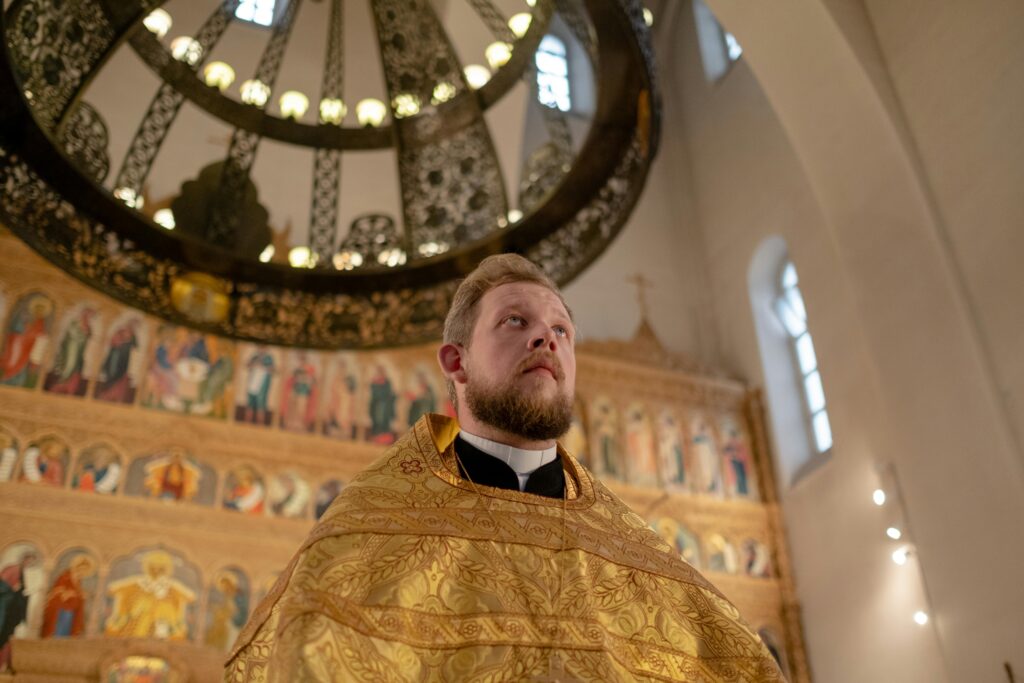Thinking of visiting an Orthodox Church for the first time? Get ready for an encounter that’s as rich, beautiful, and deeply rooted in history as it is unfamiliar to many modern Christians.
Whether you’re coming from a Roman Catholic background, a liturgical Protestant church, or an evangelical community, Orthodox worship will likely surprise you. It’s not just different—it’s profoundly immersive. But don’t worry. This guide will walk you through some essential things every first-time visitor should know to better appreciate and understand the experience.
Welcome to the Sacred—All Five Senses Included
The moment you walk into an Orthodox church, your senses are greeted (and maybe overwhelmed) by the holy. Colorful icons cover the walls, incense fills the air, candles flicker, choirs chant ancient hymns—and people are constantly in motion: crossing themselves, kissing icons, bowing, standing.
All of this might feel strange at first. But everything—every sight, sound, scent, and movement—is meant for one purpose: to draw the whole person into the presence of God. Since we are physical beings, Orthodox worship engages the entire body, not just the mind or emotions.
Forget the Pew—Orthodox Christians Stand to Worship
Orthodox Christians typically stand throughout the entire Divine Liturgy, which lasts around 90 minutes. Some churches might have pews, but often they’re reserved for the elderly or infirm. Don’t worry—you’re allowed to sit if needed, but over time, standing will become second nature. It’s a sign of reverence and attentiveness.
Crossing Yourself Is an Art (and Theology in Action)
You’ll notice people making the sign of the cross—a lot. It’s done with the right hand: forehead, chest, right shoulder, then left. The fingers are positioned to symbolize the Trinity (three fingers together) and the two natures of Christ (two fingers down).
You’re not expected to imitate immediately, but as you learn, you’ll see how even simple gestures reinforce deep theological truths.
What’s the Deal with Prostrations?
No pews and no kneeling? That’s right—at least on Sundays. Instead, you may see worshippers making prostrations: kneeling down, placing their hands on the floor, and touching their foreheads to the ground. It can feel intense at first, but it’s a beautiful, humbling gesture of repentance and reverence. During Great Lent, prostrations become more frequent.
Yes, We Kiss Stuff
Icons, the cross, the Gospel book, the priest’s hand—we kiss them as expressions of honor and love, not worship. When we greet each other before communion, it’s with a kiss of peace (or sometimes a bear hug!). It might seem unusual, but in Orthodoxy, physical gestures express spiritual reality.
What About Relics?
Orthodox Christianity has a deep love and reverence for relics—the physical remains or belongings of saints. They are not viewed as lifeless artifacts, but as sacred links between heaven and earth.
Relics often exude a sense of grace and healing. They are venerated, not worshiped, because they carry the holiness of the saint, who lived in intimate communion with God. Countless believers have found peace, healing, and even miracles through contact with relics.
In an age of disconnection, relics remind us that holiness is real, and it’s close.
Communion Is for Orthodox—but Blessed Bread Is for All
Holy Communion in the Orthodox Church is reserved for baptized Orthodox Christians. But visitors are offered blessed bread (antidoron) as a sign of fellowship and hospitality. If someone hands you a piece after communion, feel free to receive it gratefully—it’s not the consecrated Body, but it is deeply meaningful.
Confession Is Private, Regular, and Deep
There’s no “general confession” during the Liturgy. Orthodox Christians confess their sins privately to a priest, usually on a regular basis. The priest isn’t just a religious figure—he’s considered a spiritual father, guiding the faithful through repentance and healing.
A Symphony Without Instruments
Orthodox worship is almost entirely sung, and usually a cappella. The choir leads, and the congregation follows. It might feel overwhelming at first, but the repetition helps you learn quickly. In time, the Liturgy becomes not just something you attend—but something you live.
Long and Beautiful Prayers (Because God Deserves It)
Orthodox worship isn’t in a hurry. The Liturgy may take 90 minutes, but even that is a shortened version of earlier forms that lasted over five hours. It’s richly poetic, full of Scripture, and unashamedly repetitive. We pray slowly and deeply—because encountering God takes time.
The Virgin Mary Is Honored Deeply (But Not Worshiped)
You’ll hear frequent prayers to the Theotokos (Mother of God), asking for her intercessions and protection. Orthodox Christians honor her because she gave Christ His human nature and remained faithful to God. We love her not as a goddess, but as the greatest of the saints—His Mom, and our spiritual mother too.
The Iconostasis: Three Doors, One Mystery
At the front of every Orthodox church is an iconostasis, a wall of icons with three doors. The central “Royal Doors” are used by clergy for the Eucharist; the side “Deacon’s Doors” are for altar servers. The icons aren’t just decorations—they’re windows into heaven, reminding us that the saints worship with us.
Yes, Americans Are Welcome
With names like “Greek,” “Serbian,” “Antiochian,” and “Russian,” Orthodox churches may seem ethnic and exclusive. But don’t be fooled. All Orthodox churches are united in faith and worship, and more and more parishes across America are welcoming converts and using English in services.
If one parish feels foreign or unwelcoming, try another. Orthodoxy is the same everywhere in essence—even if the flavors differ.
Your First Visit Won’t Be Your Last
At first, Orthodoxy can seem overwhelming. But as the weeks go by, the foreign becomes familiar. What once seemed strange begins to feel like home. The rhythms of the Divine Liturgy begin to shape your soul. The reverence, the icons, the incense—they open a window into the Kingdom of God on earth.
So step inside. Ask questions. Light a candle. Watch. Listen. Breathe.
And know this: you are welcome here.

